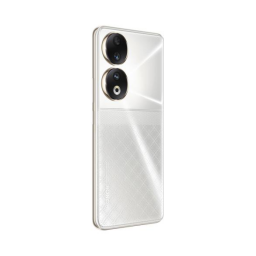In the ever-evolving landscape of mobile technology, the arrival of 5G has been a game-changer. As the successor to 4G, 5G promises unprecedented speeds, lower latency, and a host of exciting possibilities. In this article, we explore the key differences between 5G and 4G smartphones, shedding light on the advancements that come with next-generation connectivity. Understanding these disparities will help you make an informed decision when considering an upgrade or purchasing a new smartphone.

Blazing Fast Speeds and Reduced Latency
One of the most significant advantages of 5G over 4G is the incredible speed it offers. 5G networks can deliver download speeds up to 10 times faster than 4G, enabling quicker access to data, seamless streaming, and faster downloads. This enhanced speed is ideal for tasks that demand large bandwidth, such as streaming high-definition videos or online gaming. Additionally, 5G technology significantly reduces latency, the delay between the action and its response. Such as Honor 90, the new product from Honor, this lower latency provides a more responsive and real-time user experience, making activities like video calls and online gaming feel incredibly smooth and immersive.
Enhanced Capacity and Network Efficiency
5G networks are designed to accommodate a massive number of connected devices simultaneously. Compared to 4G, 5G offers enhanced network capacity, allowing more devices to be connected without compromising performance. This capability is crucial as we embrace the era of the Internet of Things (IoT), where various devices, from smart home appliances to wearable devices, rely on a stable and efficient connection. The improved network efficiency of 5G ensures a consistent and reliable connection, even in densely populated areas or during peak usage times, and this is one important reason the HONOR 90 Amazon UK can get a great response.

Empowering Innovations and Applications
The introduction of 5G unlocks a world of possibilities for technological advancements and innovation. The faster speeds and lower latency of 5G networks lay the foundation for transformative technologies like augmented reality (AR), virtual reality (VR), and autonomous vehicles. These cutting-edge applications rely on instantaneous data transfer and uninterrupted connectivity, which 5G can seamlessly provide. From immersive AR experiences to enhanced telemedicine services, 5G empowers industries to push the boundaries of what is possible, revolutionizing sectors such as healthcare, manufacturing, transportation, and entertainment.
Coverage and Transition
While the adoption of 5G is rapidly expanding, it is essential to consider the current coverage and availability. 4G networks offer extensive coverage, reaching a larger geographical area compared to 5G networks, which are still expanding. In some regions, 5G coverage may be limited or concentrated in specific urban areas. However, as the deployment of 5G infrastructure continues, coverage will gradually increase. It's worth noting that most 5G smartphones are backward compatible, meaning they can still connect to 4G networks when 5G is unavailable. This compatibility ensures a seamless transition and allows users to benefit from the existing 4G infrastructure while enjoying the advantages of 5G when available.
Conclusion
In the realm of mobile technology, the transition from 4G to 5G brings a paradigm shift, offering blazing fast speeds, reduced latency, enhanced capacity, and a catalyst for innovation. As 5G networks expand, the possibilities for groundbreaking applications and transformative experiences are boundless, reshaping the way we connect and interact with the world.